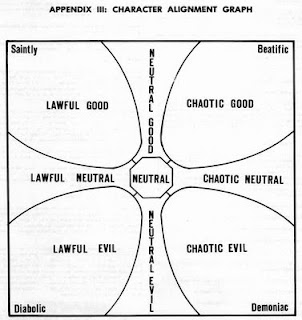Despite the smaller number of sword and sorcery heroes in comics, there's a much larger percentage of swordswomen. This can probably be attributed to the visual nature of comics--and the inherent appeal of scantily-clad warrior ladies to a predominantly male audience. Despite that, the beauteous women warriors of comics are, for the most part, more obscure than their male counterparts. It's time they got their due, starting with the trailblazers of the 1970s.
The first swordswoman of the seventies didn't have to deal with sorcery, but she did exist in a post-apocalyptic-fantasy setting, so I'm going to give her a nod. Lyra of the Femizons is from the pages of Savage Tales (vol. 1) #1 (1971) in a story called "Fury of the Femizons." This might be Stan Lee's update on William Moulton Marston's psychosexually underpinned Wonder Woman concept, or a "cautionary tale" of feminism gone wild (not a pay per view title, by the way) would lead to--or, an idea he scrawled on a napkin at a local deli to fill pages.
Lyra's 23rd Century is essentially reverse Gor, or The Planet of the Apes if you replace "apes" with "women." Lyra is the toughest gladiatrix around, defeating (and killing) the weak for the "vicious voluptuaries" of Queen Vega's court. That's until she meets hunky slave Mogon and agrees to help him with his evolutionary aims, for the sake of love. It all ends tragically, of course--well, mostly for Mogon. Lyra is forced to kill him to "prove" her loyalty to Vega. But she feels really bad about it and realizes, "when a man is but a slave--it is the women who live in bondage." Or something.
Our next swordsman is a little less obscure. Red Sonja, the so-called She-Devil with a Sword, debuted in 1973 in Conan the Barbarian #23. Sonja was Roy Thomas' Hyborian Age adaption of Sonya of Rogatino in his Conan-ified interpretation of Robert E. Howard's historical actioner "The Shadow of the Vulture." Thomas' Sonja got magical puissance with a blade from a goddess, along with geas that she would never know (in the Biblical sense) a man until he had defeated her in fair combat. After her Conan appearances, she got a famous chain-mail bikini from artist Esteban Maroto, and a lot of further appearances, including a succession of three self-titled series.
Marvel's loss of the Howard licenses couldn't sheathe Sonja's sword. She came back, and so did her chain-mail outfit so beloved by artists and fans. After a couple of one shots at other companies, Dynamite Entertainment picked up the character in 1999, and she's still going strong in an ongoing series and a succession of limiteds.
Just as Red Sonja was beginning to climb in popularity, DC unleashed their own swordswoman. Ravenhaired Starfire got her own title from the beginning, debuting in 1976. The creation of David Michilenie and Mike Vosburg, Starfire swung her sword for her world’s freedom from the alien Mygorg and Yorg for 8 issues. Like Lyra, she had a dead love for motivation, and like Red Sonja, she was always spurning the advances of other men.
The next two heroines chronologically have a connection to Red Sonja. The first, and the one to appear in the seventies, was Ghita of Alizarr. Frank Thorne took over the pencilling chores for Red Sonja in Marvel Feature #2 (Jan. 1976) and continued through the eleventh issue of her first self-titled series. Thorne spent most of the seventies getting photographed with attractive women--mostly by dressing up like a wizard and judging Red Sonja lookalike contests at conventions:
Ghita appears in three issues of 1984, and also in several collections where Thorne gets to play Thenef the Wizard in the cover photographs.
And here our heroines ride forth out of the seventies. Next week, I'll take a look at swordswomen in the eighties and beyond.


















